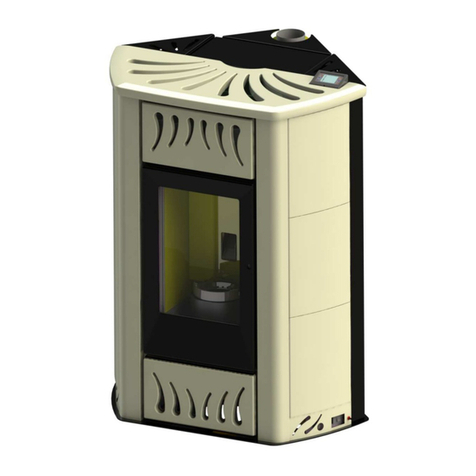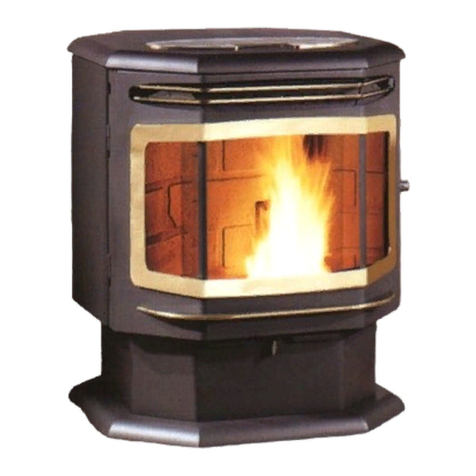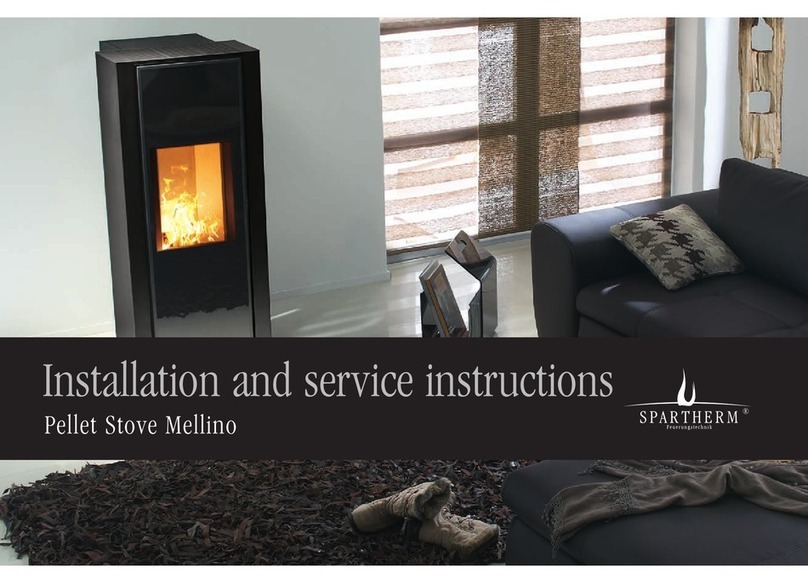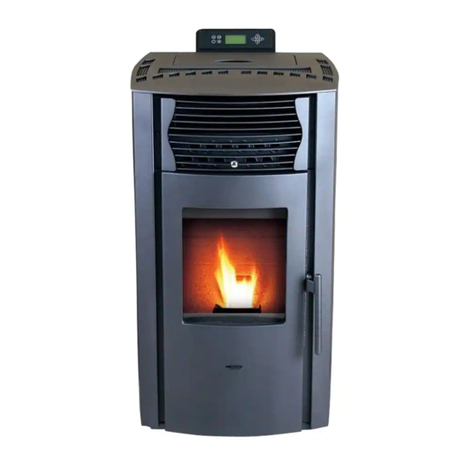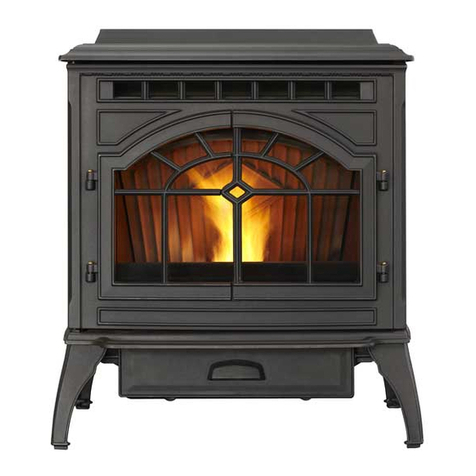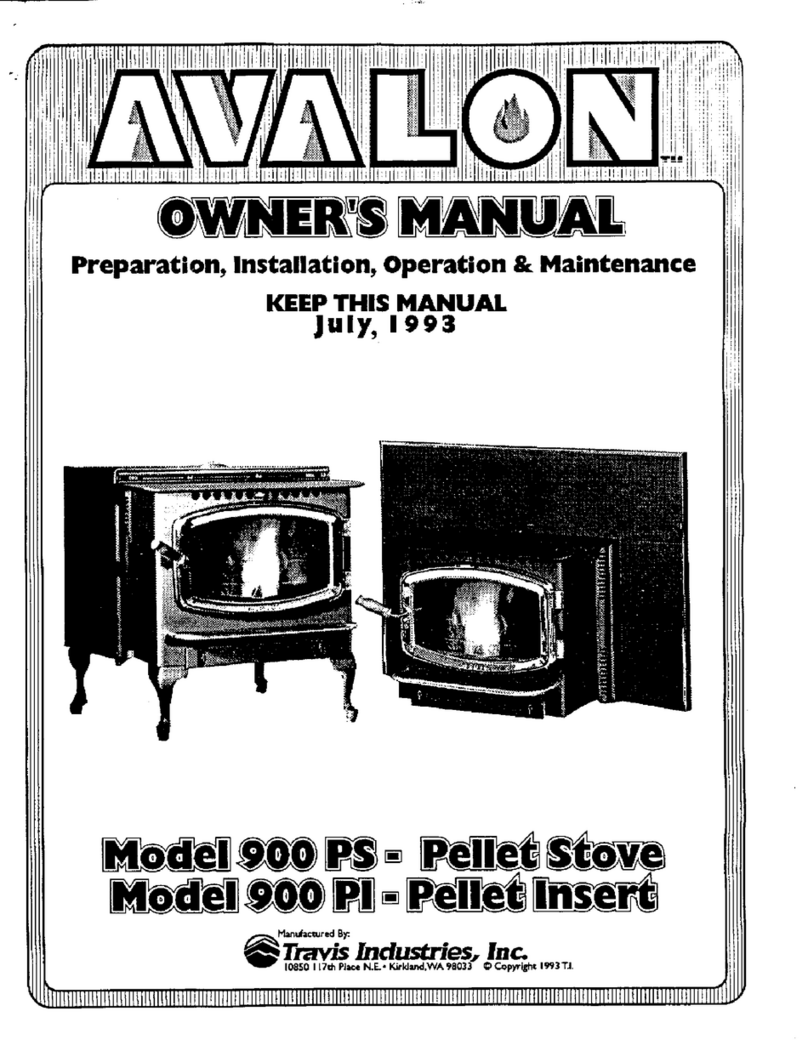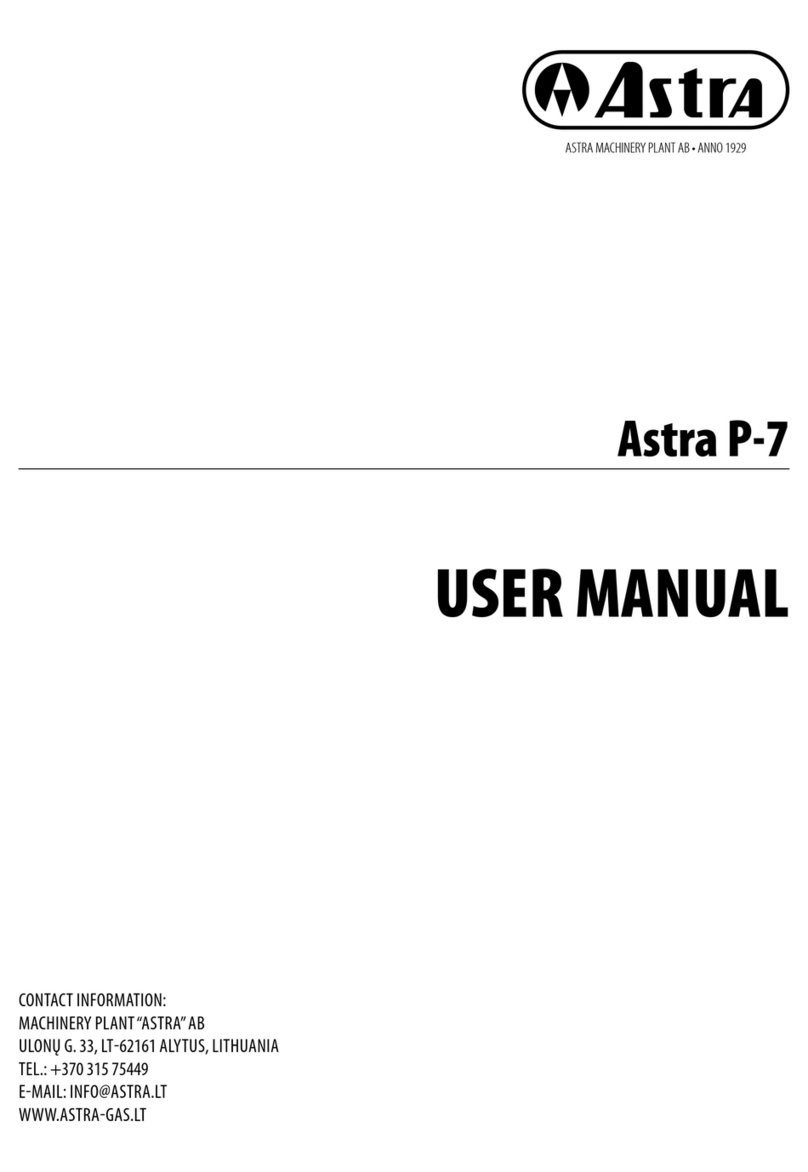
3
SAFETY PRECAUTIONS
• Do not operate your stove if you
smell smoke coming from it. Turn it off,
monitor it, and call your dealer. DO NOT
UNPLUG IT
• Keep foreign objects out of the hopper.
• Never use gasoline, gasoline-type
lantern fuel, kerosene, charcoal lighter fluid, or
similar liquids to start or “freshen up” a fire in
this stove. Keep all such liquids well away from
the stove while in use.
• Do not throw this manual away. This
manual has important operating and maintenance
instructions that you will need at a later time.
Always follow the instructions in this manual.
• Never block free airflow through the
open vents of the stove.
• Do not place clothing or other
flammable items on or near the stove.
• Never try to repair or replace any
part of the stove unless instructions are given
in this manual. All other work should be done
by a trained technician.
• The viewing door must be closed and
latched during operation.
• The stove will not operate during a
power outage. If an outage does occur, check
the stove for smoke spillage and open a
window if any smoke spills into the room.
• Do not operate the stove if the flame
becomes dark and sooty or if the burnpot overfills
with pellets. Turn the stove off, inspect it, and call
your dealer.
• Disconnect the power cord before
performing any maintenance or repairs on the
stove.
NOTE: Turning the stove “off” does not
disconnect all power from the stove.
• Do not touch the hot surfaces of the
heater. Educate all children of the danger of a
high temperature stove. Young children should be
supervised when they are in the same room as
the stove.
• Do not unplug the stove if you
suspect a malfunction. Turn the stove off,
inspect it, and call your dealer.
• High ambient temperature in summer
time may cause the heat sensors on the stove to
activate the blowers, disconnect the stove when
not used for extended periods..
• Contact your local building officials to
obtain a permit and information on any
installation restrictions or inspection
requirements in your area. Notify your
insurance company.
• The e xhaust s ystem mu st be
completely airtight and prope rly installed. All vent
connector joints must be sealed and fastened in
accordance with the p ellet pipe manufactur er's
instructions to ensure consistent performance and
avoid smoke and ash spillage.
• This unit must be properly installed to
prevent the possibility of a house fire. The
instructions must be strictly adhered to. Do not
use makeshift methods or compromise in the
installation.
• Your stove requires maintenance and
cleaning. Failure to maintain your stove may lead
to smoke spillage in your home.
• Allow the stove to cool before
carrying out any maintenance or cleaning.
Ashes must be disposed or stored in a metal
container with a tight lid and placed on a non
combustible surface well away from the home
structure.
• This stove is designed and approved for
pelletized wood fuel only. Any other type of fuel
burned in this heater will void the warranty.
• This stove must be connected to a
standard 120 V., 60 Hz grounded electrical
outlet. Do not use an adapter plug or sever the
grounding plug. Do not route the electrical cord
underneath, in front of, or over the stove.
• When installed in a mobile home, the
stove must be bolted to the floor, have outside air,
and NOT BE INSTALLED IN A BEDROOM (Per
H.U.D. requirements). Check with local building
officials.
• The exhaust system should be
checked, at least twice a year for any build up
of soot or creosote.
• Stove Builder International Inc.
grants no warranty, implied or stated, for the
installation or maintenance of your stove, and
assumes no responsibility of any
consequential damage(s).





